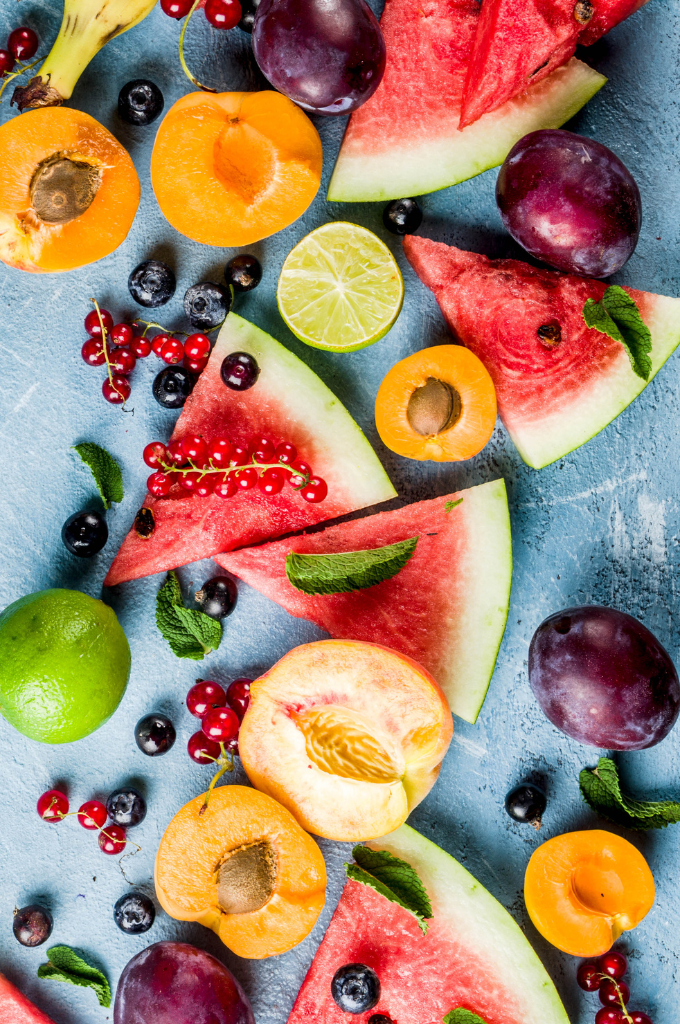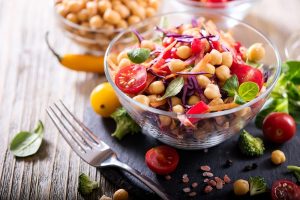YOGURT
Yogurt is a light, filling, and healthy food, as it’s a probiotic that supports gut health thanks to the presence of live active cultures. Even people with mild lactose intolerance can usually enjoy it without issues.
For those with a stronger intolerance, it’s best to opt for lactose-free yogurt or alternatives like kefir.
Which yogurt to choose? The best option is a plain low-fat yogurt (not necessarily 0% fat) with no added sugars or fruit—better to add fresh fruit yourself (why not some watermelon chunks?). If you’d like to use it as a protein-rich snack, plain Greek yogurt is ideal, and you can make it tastier by adding fruit or nuts.
GRAIN AND LEGUME SALAD
As an alternative to the usual pasta or rice, you can prepare salads with other grains like BARLEY (slightly higher in protein) or CORN (a bit higher in healthy fats), mixed with vegetables and LEGUMES such as CHICKPEAS, an excellent source of B vitamins, minerals, and compounds called “saponins,” which help lower cholesterol. Or PEAS, packed with vitamins, fiber, and phytosterols that support cardiovascular health.
This makes for a fresh yet nourishing meal, with the right balance of carbohydrates and plant-based proteins. To make the salad even more filling, you can add seasonal vegetables, creating a complete GRAIN AND LEGUME SALAD.
LEAN MEAT AND OILY FISH
Summer is also grilling season—and sure, a rib, an entrecôte, and a cold beer can’t be missing. But for everyday meals, it’s better to choose LEAN MEATS like CHICKEN or VEAL, which are high in protein and low in fat (3–5 grams per 100 grams), or OILY FISH like MACKEREL or ANCHOVIES, rich in protein and, above all, in essential fats such as EPA and DHA. These omega-3s are vital for health and cannot be produced by the body. Tuna and salmon, in the right amounts, are also excellent options when paired with vegetables.
WHAT ABOUT DESSERT?
In summer, the perfect dessert can only be gelato.
Which gelato to choose? Flavors are, of course, a matter of personal taste, and gelato should also be a moment of joy and a break from routine. That said, pairing a cream-based flavor with a fruit flavor can make your choice lighter and more refreshing.
If you’d like to start a nutritional journey without restrictions, with a balanced and personalized plan tailored to your lifestyle, physical activity, and goals, contact us to book your first Nutritional Visit—or a free introductory consultation.



